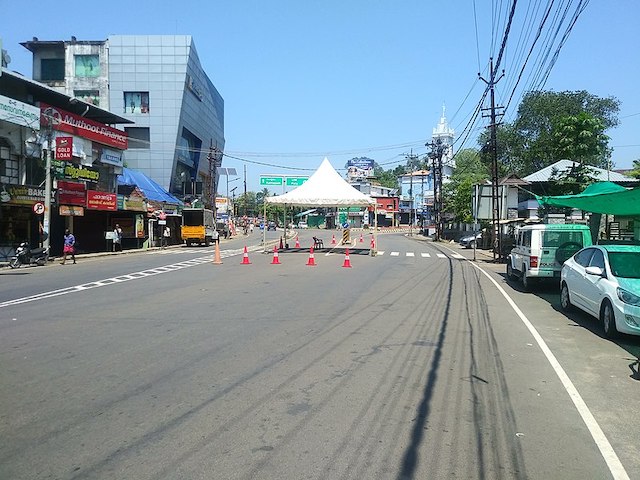The Covid-19 pandemic brought about unprecedented disruptions across the globe, including significant shutdowns of industries and transportation. While these measures aimed to curb the spread of the virus, they inadvertently led to an unintended consequence: a dramatic reduction in the concentration of short-lived cooling particles in the air.
A recent study conducted at Hanimaadhoo, a measuring station in the Maldives, sheds light on the impact of these changes on the climate. The findings reveal that although the reduction in cooling particles improved air quality, it barely affected the levels of long-lived greenhouse gases, ultimately leading to stronger climate warming.
Situated in the northernmost part of the Maldives, Hanimaadhoo measuring station has been diligently monitoring the atmospheric composition and radiation for over two decades. The station’s strategic location captures air masses from the Asian subcontinent while being isolated from regional emission sources. This unique positioning provides valuable insights into the interplay between atmospheric conditions and human activities.
Pandemic Shutdowns and Climate Impact
As the Covid-19 pandemic unfolded in South Asia, countries like India, Pakistan, and Bangladesh implemented stringent measures to control the spread of the virus. These measures led to a sudden and drastic decrease in emissions across the region, presenting an opportunity to study the consequences on climate systems. The study, published in npj Climate and Atmospheric Science, discovered that the concentrations of short-lived air particles responsible for pollution experienced a significant decline. In contrast, the levels of long-lived greenhouse gases remained largely unaffected.
Short-lived cooling particles, also known as aerosols, possess the ability to reflect solar radiation back into space, thus cooling the Earth’s surface. With reduced aerosol content in the atmosphere, the cooling effect diminishes, resulting in less mitigation of the warming impact caused by long-lived greenhouse gases. Consequently, the removal of cooling particles led to a decrease in their “masking” effect, exacerbating the warming caused by greenhouse gases.
Measurements taken simultaneously over the northern Indian Ocean during the pandemic-induced shutdowns revealed a seven per cent increase in solar radiation reaching the Earth’s surface. The amplified solar radiation subsequently led to higher temperatures, as indicated by the study’s findings. This phenomenon highlights the direct correlation between reduced aerosols and elevated surface temperatures.
Insights from Professor Orjan Gustafsson
Leading the study, Professor Orjan Gustafsson from Stockholm University in Sweden emphasises the significance of this large-scale geophysical experiment. He explains that while the pandemic-induced shutdowns resulted in bluer skies and cleaner air, the absence of cooling air particles actually led to an increase in climate warming. Professor Gustafsson further emphasises that a complete transition from fossil fuel combustion to renewable energy sources, with zero emissions, could rapidly unveil the unmasked impact of aerosols while greenhouse gases continue to persist.
The study’s results indicate that during a transitional phase towards reduced emissions, the removal of aerosols may cause a temporary increase in net climate warming due to the unmasking effect. However, this warming effect should not overshadow the urgent need for powerful emission reduction. Professor Gustafsson underscores the importance of addressing both the reduction of aerosols and greenhouse gases to mitigate climate change effectively.


